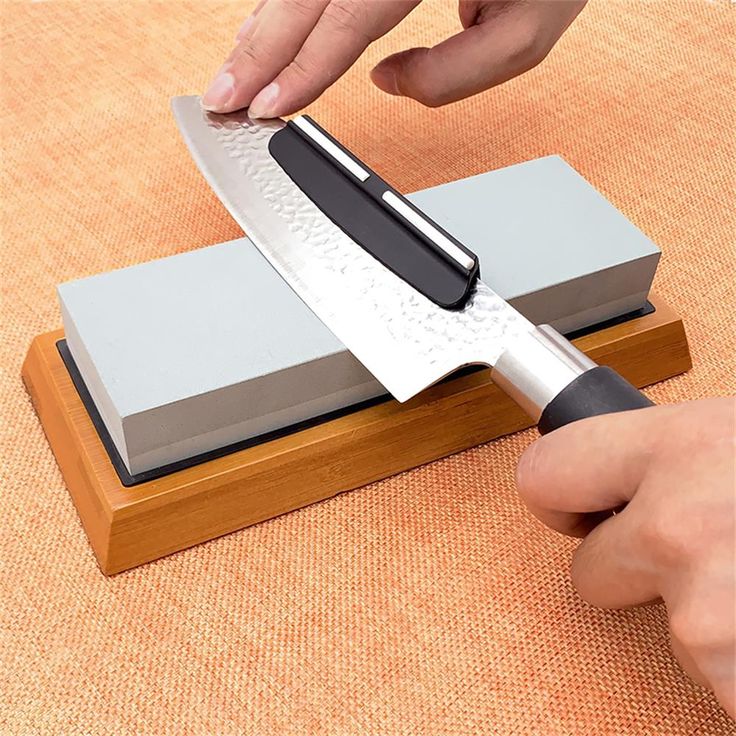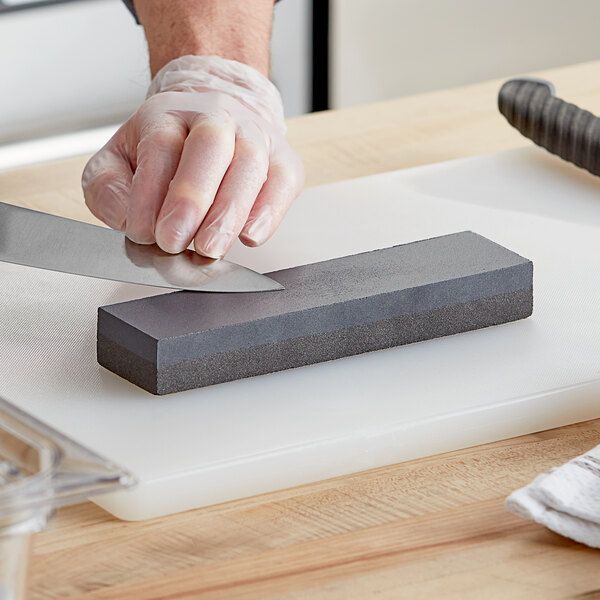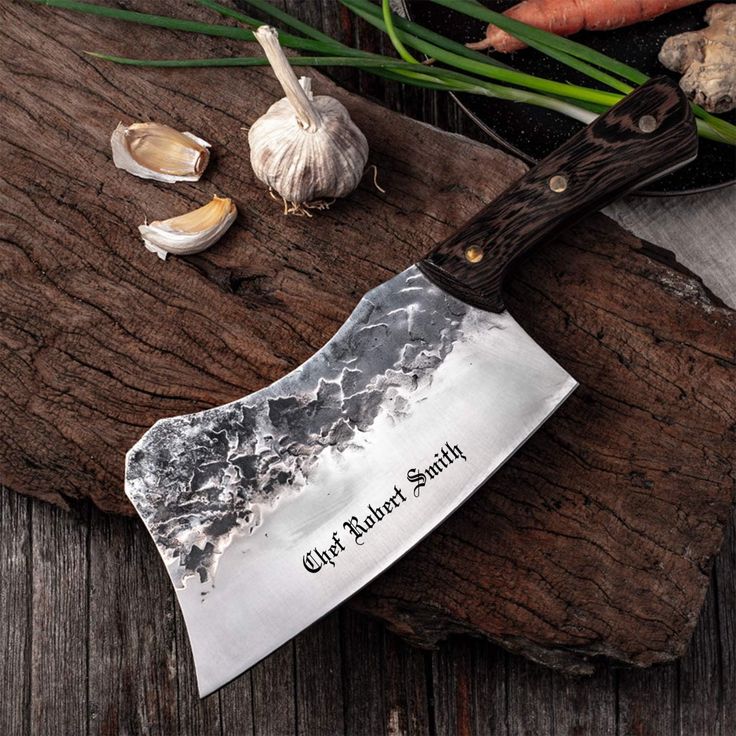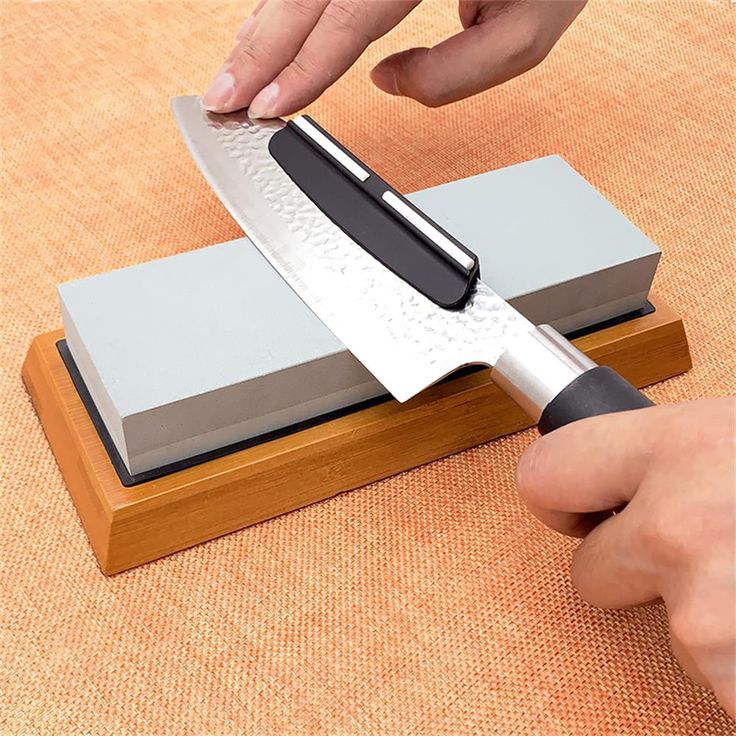Maintaining sharp kitchen knives is essential for any chef or home cook. A sharp knife enhances efficiency, improves safety, and contributes to better food preparation. Among the various sharpening tools available, kitchen knife sharpening stones are highly regarded for their effectiveness in creating and maintaining a sharp edge. However, the grit of the sharpening stone plays a crucial role in the sharpening process. This article delves into the different grits found in sharpening stones, helping you understand their specific uses and how to choose the right one for your needs.

Understanding Grit: The Basics
Grit refers to the size of the abrasive particles on a kitchen knife sharpening stone. The grit number indicates how fine or coarse the stone is: lower grit numbers represent coarser stones, while higher numbers denote finer stones. For example, a stone with a grit of 200 is much coarser than one with a grit of 1000. The rougher the stone, the more material it removes from the blade, making it suitable for reshaping and repairing nicks and chips. Conversely, finer grits polish the edge and refine the blade’s sharpness, perfect for honing an already sharp knife.
Understanding the grit scale is essential for effective knife sharpening. Typically, kitchen knife sharpening stones fall within ranges from 200 to 3000 grit or more. Coarser stones (200 to 600 grit) aid in reshaping blades and removing material. Medium stones (800 to 1500 grit) are ideal for general sharpening needs, while fine stones (2000 grit and above) focus on honing and polishing the edge for optimal performance. Knowing what each grit can accomplish allows you to select the right stone that meets your knife maintenance requirements.
Coarse Grit Stones: Ideal for Repair and Reshaping
Coarse grit stones, typically ranging from 200 to 600 grit, serve as the workhorses of knife sharpening. These stones excel when it comes to repairing damaged blades, reshaping edges, and quickly removing material. If you’ve encountered a knife with a dull edge, chips, or nicks, a coarse stone can rapidly restore it to a usable condition.
Utilizing a coarse grit stone requires a bit of technique. When using a coarse stone, start with even strokes across the blade, applying light pressure. Focus on maintaining a consistent angle as you sharpen. This technique enables the stone to remove more material and creates a more effective edge profile. While coarse stones shine for repair and reshaping, they can also leave a rough edge, necessitating a transition to finer stones for polishing and honing. After using a coarse stone, a proper progression to medium or fine grits is essential for achieving a razor-sharp edge.
Another factor to consider when using coarse stones is the type of knife. Chef’s knives and other culinary tools often benefit from coarse sharpening, especially if they endure heavy use. However, be cautious not to overuse coarse stones, as excessive sharpening can lead to unwanted wear and a shortened lifespan for the blade. Striking a balance between maintenance and preservation is vital for long-term knife care.

Medium Grit Stones: Balancing Sharpening and Polishing
Medium grit stones, generally falling between 800 and 1500 grit, provide an excellent balance between sharpening and polishing. These stones are versatile and cater to most everyday sharpening needs. If your knife blades feel dull but do not display any significant damage, a medium grit stone can restore the sharpness without removing excessive material.
Using a medium grit stone often involves a gentler touch compared to coarse stones. Apply even pressure while maintaining consistent angles. The primary goal with medium grit sharpening is to refine the edge created by the coarse stone while bringing the blade closer to its final sharp state. These stones are perfect for routine sharpening, especially for knives that see regular use but don’t require extensive reshaping.
Regular use of medium grit stones can yield significant benefits. They help maintain the knife’s edge, defend against wear, and provide a reliable sharpening solution in between professional sharpenings. Additionally, they can sharpen a wider variety of knives, from paring knives to utility blades. If you prioritize a straightforward sharpening routine and keep your knives in good condition, adding a medium grit stone to your sharpening arsenal is a wise decision.
Fine Grit Stones: The Key to Precision and Polish
Fine grit stones, typically those with a grit of 2000 and above, focus on honing and polishing your knife edges to perfection. These stones refine the sharpness achieved through the coarser stones, creating a keen edge suitable for detailed tasks in the kitchen. A fine grit stone is not about material removal but rather about achieving a precise and polished finish.
Using a fine grit stone involves slower strokes and a lighter touch, emphasizing the angle of the blade rather than pressure. The goal is to create a polished, razor-sharp edge that reduces friction during cutting, ensuring smooth strokes. While fine stones are ideal for final polishing, they also excel at maintaining an already sharp knife. Regular use of a fine grit stone can preserve your knife’s performance between heavier sharpening sessions.
Fine grit stones also vary in composition. Water stones, oil stones, and diamond stones can all find application in the fine grit range. Each type can provide different finishing textures, and it often comes down to preference. Experimenting with various fine grit stones can help you discover which shape and finish work best for your cooking style.

The Benefits of Progression: Why Use Multiple Grits?
Progressive sharpening with multiple grits is essential for achieving a sharp edge, especially for high-quality kitchen knives. When you start with a coarse grit to repair or reshape, you create a basic edge. Moving to a medium grit allows for refinement, removing any roughness left by the coarse stone. Finally, using a fine grit stone gives the blade a polished finish, promoting optimal performance.
This multi-step approach not only enhances sharpness but also extends the life of the knife. Each step in the sharpening progression reduces wear and tear. This process helps maintain the blade’s structural integrity. It also maximizes the knife’s cutting efficiency. Understanding this progression fosters a greater appreciation for knife maintenance and enhances your cooking experience.
Implementing a multi-grit sharpening routine also enhances your culinary skills. As your knives achieve optimal sharpness and maintain their performance, you can handle ingredients with increased precision. The right edge encourages confidence, allowing you to explore new techniques and recipes without fear. The result? A more enjoyable and efficient cooking process where culinary creativity can flourish.

Choosing the Right Stone Based on Knife Type
Selecting the right kitchen knife sharpening stone involves understanding your knives and their intended use. Different knives possess unique shapes, edges, and purposes, which dictate the appropriate grit for effective sharpening. For instance, high-end Japanese knives made from harder steel benefit from fine grit stones due to their fine edge and delicate design. Conversely, German-style knives often require a balance of medium to coarse stones due to their robust build.
Moreover, specialty knives like boning or filleting knives may necessitate unique honing techniques. Understanding how each knife functions leads to better decisions regarding the kitchen knife sharpening stone to use. A chef’s knife might thrive on a routine involving medium grit initially, then switching to fine grit for proper maintenance. In contrast, a heavy-duty cleaver may require coarser stones for repairs but benefit from medium grit polish.
Recognizing the relationship between the knife type and grit specification empowers you as a cook. Mastering this skill not only improves your knife performance but also optimizes your overall cooking experience. Building a well-rounded selection of kitchen knife sharpening stones tailored to your specific knives ensures efficient maintenance and longevity, allowing you to harness the full potential of your kitchen tools.

Conclusion: Elevate Your Knife Skills with Grit Knowledge
Understanding the nuances of kitchen knife sharpening stones and their different grits provides invaluable insights to enhance your culinary practices. From coarse stones for repair and reshaping to fine grit options designed for precision and polish, each grit serves a unique purpose. By mastering the art of progression—using multiple grits in a systematic manner—you can achieve and maintain the ideal edge for all your specialized knives.
Taking the time to research and invest in a variety of kitchen knife sharpening stones tailored to your needs amplifies your culinary confidence and skills. The benefits of sharp knives cannot be overstated; they make preparation easier and enhance your ability to execute intricate culinary tasks. Embrace the knowledge of grit, and enjoy the results of a well-honed blade in your kitchen. By prioritizing knife care, you will elevate your cooking experience, foster culinary creativity, and ensure your knives remain sharp for years to come.

